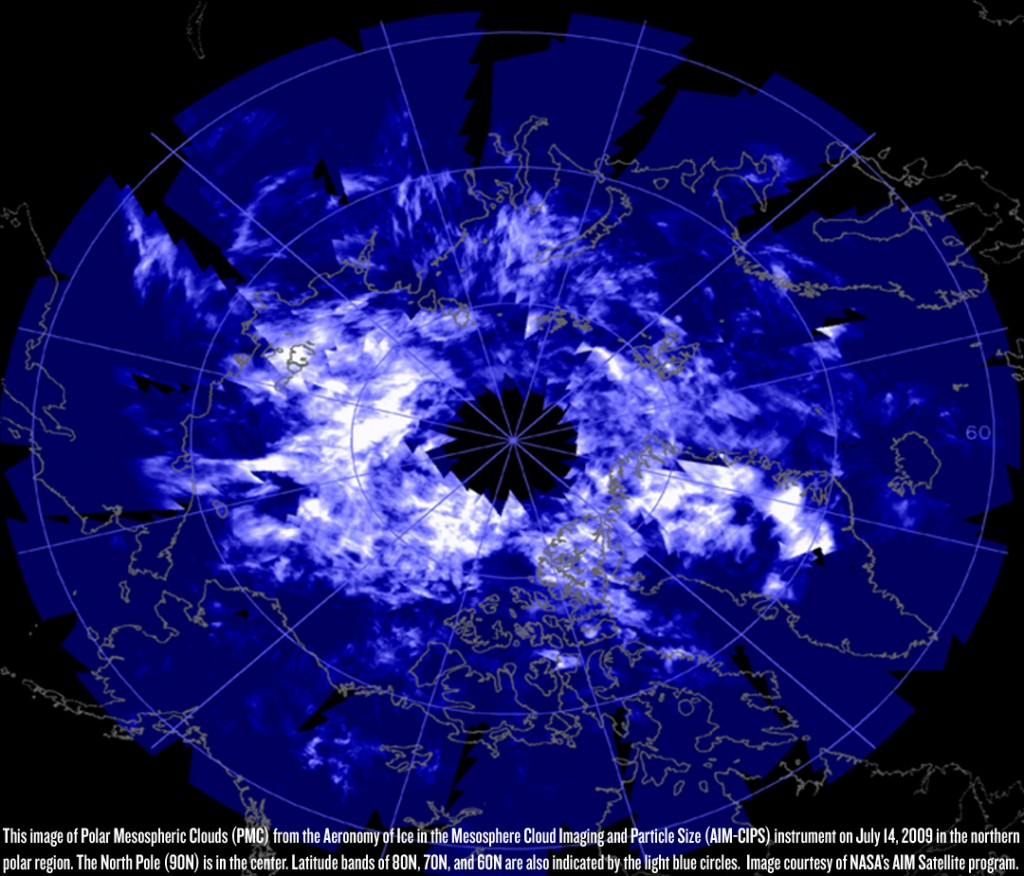It’s taken five years of satellite imaging research, but atmospheric scientists have finally discovered what’s causing the mysterious electric blue glowing clouds which appear over the polar regions during the summer months. Using NASA’s AIM™ Satellite, scientists discovered that water vapor is freezing around nanoscopic bits of meteor smoke left by passing meteors. These noctilucent (night-shining) clouds, form 50 miles (80km) above each pole during the summer, unlike regular clouds which form 0.3 to 7.5 miles above the Earth’s surface.
Unlike white water vapor clouds near the planet’s surface, noctilucent clouds appear electric blue in color due to the tiny crystals that preferentially scatter that color of light in particular. But meteor smoke is not the only reason these clouds are forming. Scientists also discovered that the meteor particle makes up only 3% of each crystal — the remaining 97% is water. And how so much water getting up there so high? Methane gas is to blame because once that gas hits the ozone layer (60 miles / 100km above the Earth’s surface) it turns to water vapor. Methane, of course, is a potent greenhouse gas, and is sadly just one of the culprits behind Earth’s changing atmosphere. In an interview with National Geographic the study’s co-author James Russell, says, “Earth’s upper atmosphere [has] been changing in ways that we don’t fully understand. Noctilucent clouds are occurring more often, getting brighter, and creeping down toward the Equator. I have a strong suspicion this is because of methane.”
Methane seeps out of human garbage dumps, fuel refineries, livestock, and even people themselves. Water vapor, which has seen an increase of 15% over the past 30 years — coupled with the abundance of methane gas—is causing these night-shining clouds to be 20% to 30% brighter and five times more frequent. “You need three things to make them: very cold temperatures, water vapor, and a particle for water to stick to and freeze,” Russell tells National Geographic. “We’ve finally identified the particle — the meteor smoke — and the methane seems to be adding extra water vapor.” You can read the full study by visiting the Journal of Atmospheric and Solar-Terrestrial Physics. For a photo gallery of night-shining clouds CLICK HERE.


